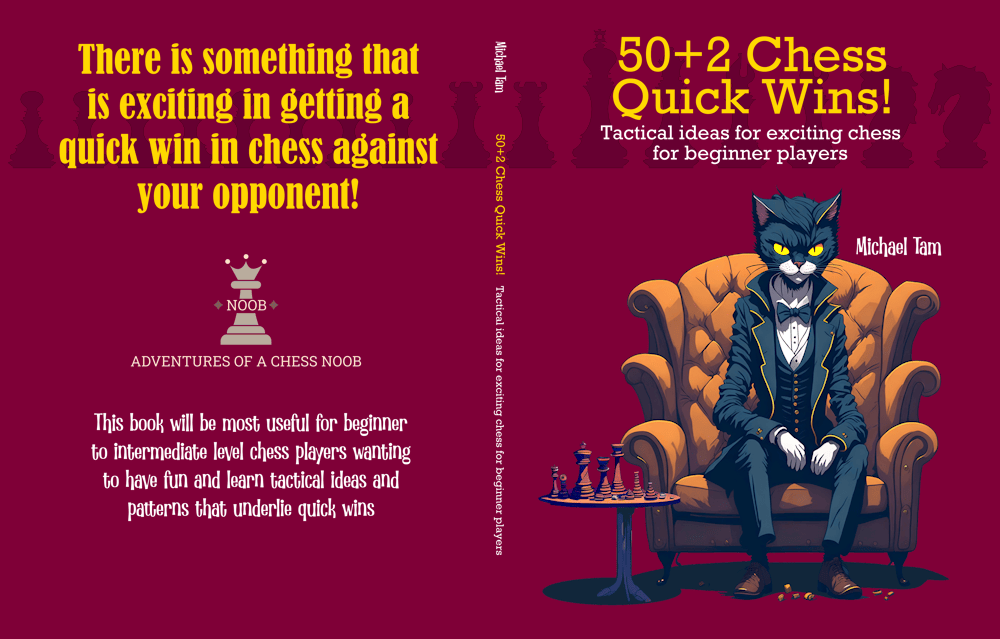
English Opening | WINNING with BRILLIANT ROOK SAC! 🤩
#english #fourknights #rooksac #brilliancy
In the last video and article, I played for Team Sydney against my opponent for Team Melbourne in an Australian interclub tournament. This article describes our second match, where I had the black pieces!
My opponent @philipwaters played a hypermodern opening, the Nimzowitsch Defense in the last game and in this one, led with the English Opening, which is hypermodern-ish. Against the English Opening, I have no special tricks. Looking at my statistics when playing as Black, I’ve only faced the English opening 34 times, which is less than 3% of the time. And I’ve done okay, winning over half the time. What I usually do against the English is to simply play according to opening principles; develop centre pawns, take the full centre if allowed, develop pieces, generally knights before bishops, and look for opening attacks.
And so not surprisingly, we ended up with a Four Knights type position, which interestingly was also known as the Nimzowitsch Variation; an echo from the first game!
Here, the opponent knew the opening better than me. On move 5, they leapt forward with their king's knight with a capture (5. Nxe5) and I saw that recapturing would result in White having a common tactical pattern; a pawn fork of the knight and bishop in the centre of the board (5... Nxe5 6. d4!). In the game, I had assumed that I must had made a mistake and so played (5... d6?) instead. This was the actual mistake!
The best approach was to invite the fork, as after trades and manoeuvring, Black has tactical compensation with an engine evaluation of [+0.2]; (6. d4 Bb4 7. dxe5 Nxe4) - with White's c3-knight pinned to the king, and under attack twice by Black's knight and bishop.
I didn't recognise this in the game, and after a couple of moves, saw that not only had I lost a pawn, I also seemed to have lost control of the centre, with White having pawns on e4, d4 and c4! Oh no!
However, the position is not simple for White to navigate either! By this point, I saw the tactic in the aforementioned correct line - pinning White's knight with my dark square bishop, and then attacking it twice over with Nxe4. After (7... Bb4), White blundered with (8. Bd2??) ostensibly unpinning their knight. However, this was the wrong approach; Black needed to defend their e4-pawn from my knight! As I now had (8... Bxc3! 9. Bxc3), trading my bishop for White's knight, and removing the only defender of the e4-pawn. So, (8... Nxe4), and I recaptured a point of material, resulting in a mostly equal position!
On move 11, I made another serious mistake as I underestimated the impact of White's potential control of the e-file while being just one step ahead of me. I castled short, and the evaluation was almost [+4]! The best move was to simplify the position by trading my knight for White's bishop, which took away their bishop pair advantage, and removed a weakness in that my knight was at risk of getting pinned to my queen. I realised this mistake the next move when White played (12. Re1) as ultimately, White could trade a pawn for my knight.
And indeed, they "placed pressure on the pinned piece" next with (13. f3?!). Why was this an inaccuracy? Luckily for me, tactical heuristics and principles such as, "place pressure on the pinned piece", have exceptions, and in this position, I just so happened to be able to make use of one! My "get out of gaol" tactic was that my knight could jump out of the pin, exposing the queen, but in doing so I captured Black's bishop first with (13... Nxc3!), and the knight had a chained attack on White's queen! After trades, I was doing okay!
White opted to keep the queens on the board and so at the end of move 14, I managed to wriggle out of another mistake, and return a position of equal material, and almost equal evaluation!
Having not performed well in the opening stages, I committed myself to playing more carefully from this part of the middlegame. No more playing moves on a phone while on the move! And I found a good idea. White's king was relatively exposed on the back rank, having moved one of their rooks into the centre of the board early to launch an attack. White's king was also relatively exposed along the dark squares, and White only had a light square bishop remaining. I now took advantage of the open b-file, and White's weak d4-pawn to counterattack!
We trade a pair of rooks (21... Rxb1+! 22. Bxb1), simplifying the position. And then, (22. Qf4?) which threatens a chained fork of the d4-pawn (which then comes with an absolute fork of White's king and e5-rook), and the c1 square (which then comes with an absolute fork of White's king and the b1-bishop). Nice!
Stockfish called this move a mistake, as White could refute it with (Qb4), defending both the d4-pawn and b1-bishop. So, the correct move order was to play Rb8 FIRST, controlling the b-file. White saw the same tactic but played the wrong execution with (23. Qd1). Although this does defend both the bishop and pawn, it gave up control of the b-file, and allowed (23... Rb8!), and the rook joins the attack!
I'm proud of my final few moves in the game. White attempts to dislodge my queen with (24. g3??), but it's a blunder! Remember the open b-file and White's king being exposed on the back rank! I ignore the threat on my queen and capture White's bishop on the back rank with my rook (24... Rxb1!!), effectively sacrificing either my rook or my queen!
However, White's queen is now pinned to their king. If they choose to capture my queen (gxf4), I capture White's queen with check (Rxd1+) and we enter an endgame where I'm up a piece (rook and bishop vs rook) and have a pawn majority. Completely winning!
In the game, White's queen opted to capture my rook (25. Qxb1), but it couldn't defend both the bishop and pawn at once! On b1, the White queen no longer had vision on the d4-pawn so (25... Qxd4+), and absolute fork, and White would lose their rook their next turn. Again, we would enter an endgame where I'm up a piece (queen and bishop vs queen) with a pawn majority. White, having suffered emotional damage, resigned. GG!
The big takeaway from this game is that even if you recognise that you've blundered, don't resign immediately! This is especially so at the beginner-intermediate level where mistakes are common in complicated positions. When there's still a lot of material left on the board, it is often possible to claw back to equality and even win! Also, look for and consider sacrifices in your calculations, otherwise, you'll miss potential winning ideas!



